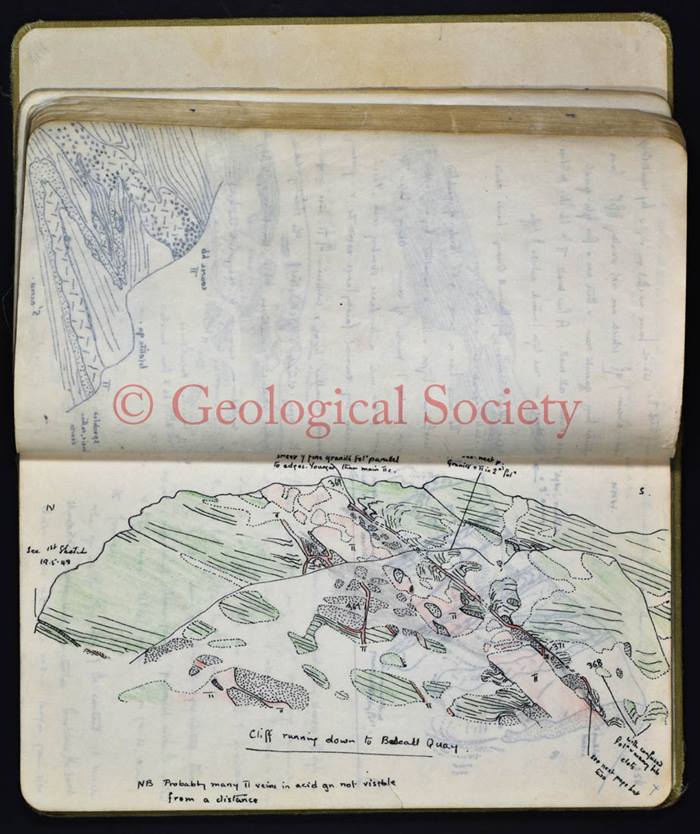Lewisian Complex

|
|
| Janet Watson and John Sutton (bending down) pictured during their post graduate research, [1947-1949]. Archives Imperial College London. Click to enlarge. |
|
For Janet Watson’s PhD, she and her fellow research student (and later husband) John Sutton (1919–1992) were tasked by H H Read to try and understand the Lewisian complex of North West Scotland.
Lewisian gneisses are riddled with dolerite dykes, and Watson and Sutton were able to use these to demonstrate that the Lewisian was not a single system, but could be separated into two distinct chronologies, which they called the ‘Scourian’ and the ‘Laxfordian’. The older Scourian (mapped by Watson) was pre-dyke, the younger Laxfordian was post-dyke.
As well as achieving their respective PhDs in 1949, the research formed the basis for the landmark paper “The Pre-Torridonian metamorphic history of the Loch Torridon And Scourie areas in the North-West Highlands, and its bearing on the chronological classification of the Lewisian”, published in the Society’s Quarterly Journal in 1951. Although met with scepticism from some quarters at the time, radiometric dating would later prove their observations to be correct.

|
| Watson's field book of notes and sketches made on Scourie, 1948. (LDGSL/1078/B/9). |
At the heart of all of Watson’s research was her strong belief in gathering evidence from primary observation in the field, as demonstrated by this notebook in which she meticulously records the geology of a cliff overlooking Badcall Quay, Scourie, during the late spring of 1948.
Outer Hebrides >>